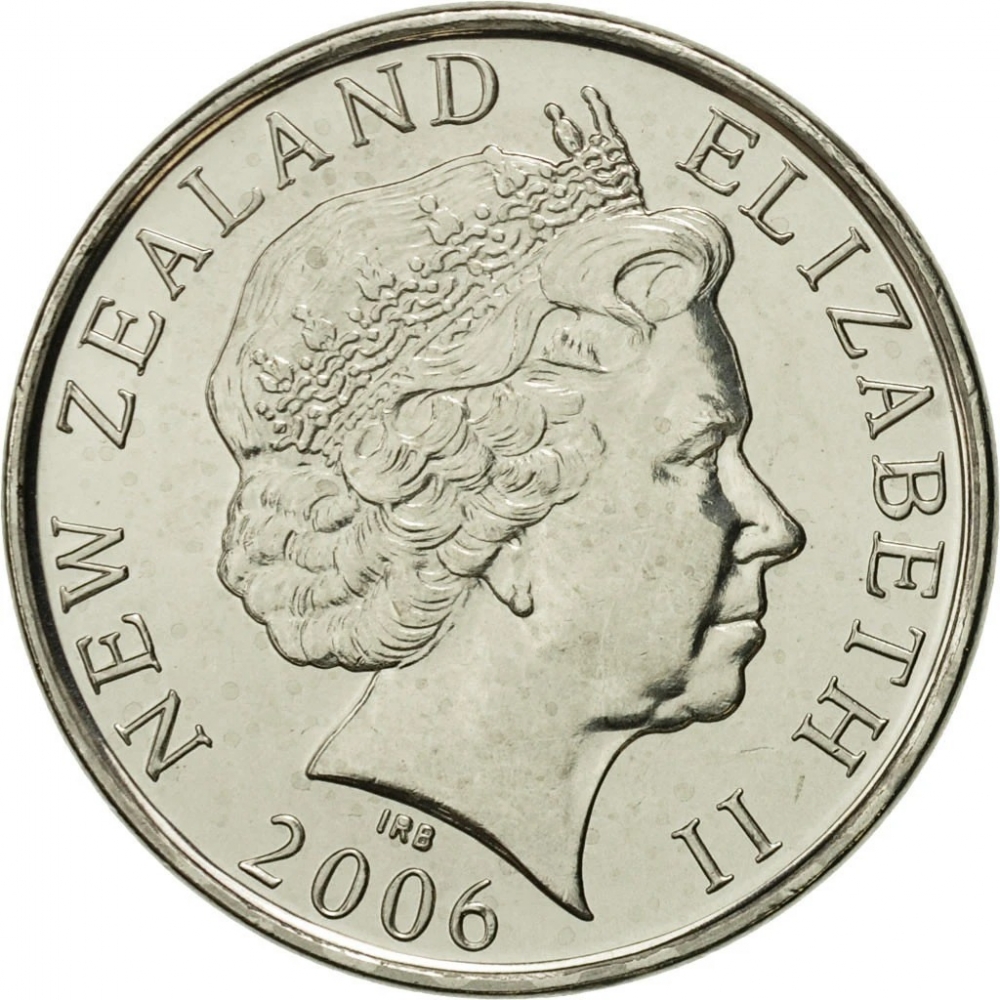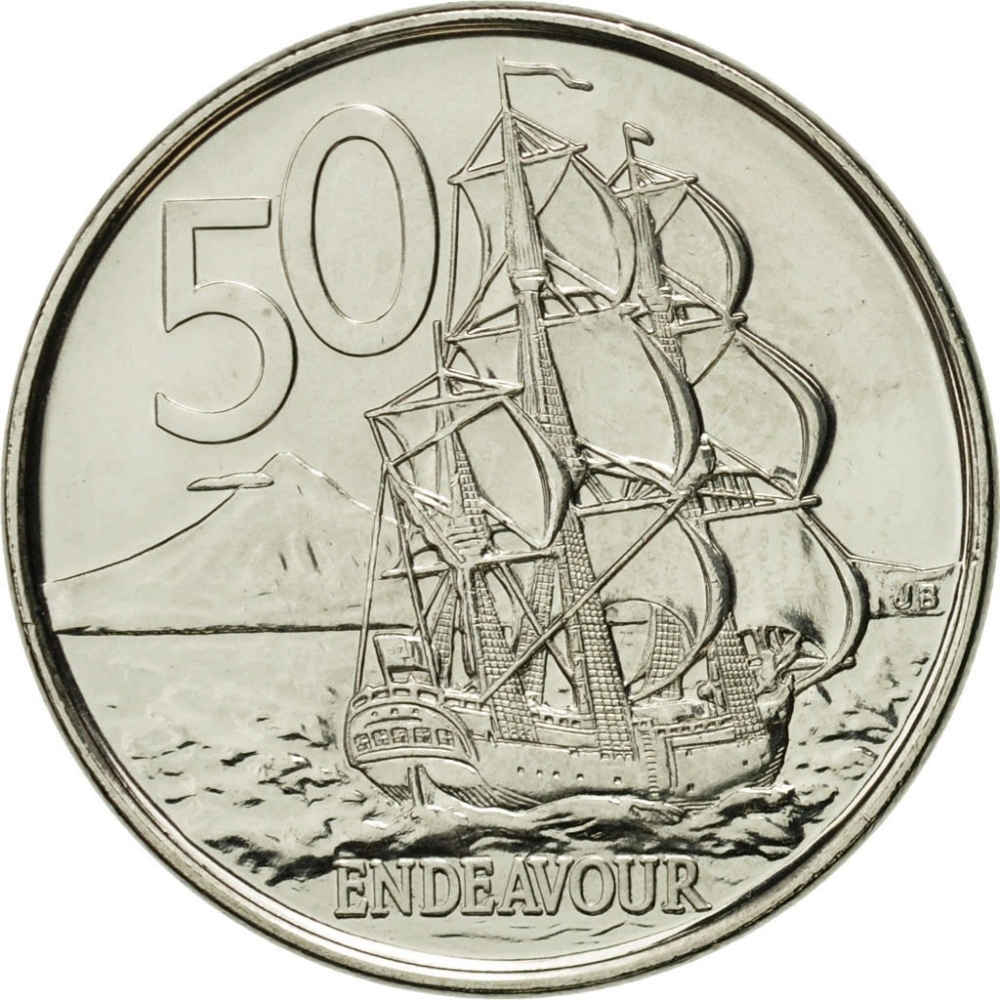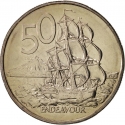You are about to finish your registration. Please check your mailbox (including spam folder). There should be a letter with a confirmation link. Check setting to make sure that your e-mail address is correct.
Send letter again
Obverse

|
Fourth crowned portrait of HM Queen Elizabeth II facing right, wearing the Girls of Great Britain and Ireland tiara. NEW ZEALAND ELIZABETH II |
|---|---|
Reverse

|
Depicts the barque HMS Endeavour, commanded by Captain James Cook on his first exploration of the Pacific, sailing to the right, passing in front of Mount Taranaki (Mount Egmont), denomination above left, legend below. 50 |
| Edge |
50 Cents
4th portrait, Magnetic
KM# 119a Schön# 199
Characteristics
| Material | Nickel Plated Steel |
| Weight | 5 g |
| Diameter | 24.75 mm |
| Thickness | 1.7 mm |
| Shape |
|
| Alignment | Medal |



